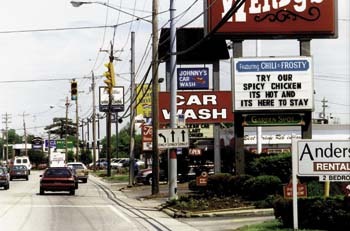I have been involved with the Research and Standards Committee of the International Sign Assn. for 25 years. You might have seen me in the Environmental and Legislative Committee meetings, as well. For several years, my committee assignment has been to track electro-magnetic interference (EMI) and electro-magnetic compatibility (EMC). I have worked with sign controllers and components to track EMI, and I’ve been privileged to work with Thomas Jackson, P.E., president of Communication Certification Laboratory (CCL).
Certification for signs and components for EMI is a hot topic in Europe, where it is required. The question every sign company operator should ask is, "Will the CISPR 15 standard come across the Atlantic Ocean?" Most signshops want to know how, or if, this will affect them in the future.
There are three considerations:
1. Does the electronic neon power supply or the electronic sign generate radio signals? I have always specified that the neutral wire be the same size as the feeders on the primary wiring of electronic message centers. Also, I have used grounding rods and screws to eliminate radio signals caused by the switching of power supplies and triacs (solid-state switches).
2. Are other devices compromising your sign’s operation? Again, grounding and shielding is a remedy.
3. Does the sign interfere with other electronic equipment? This refers to electro-magnetic compatibility (EMC). Let me explain why this is important with the following true example: One person is in a remote-control wheelchair. A second person nearby makes a cell-phone call. The cell phone interferes with the remote controls and puts the wheelchair in motion, violently slamming the person against the wall.
Advertisement
The above three considerations are reasons those with pacemakers watch for alerts at restaurants and other commercial and industrial locations, and why you must turn off your cell phone in airplanes and many hospitals.
CISPR 15 Ed. 6.0 B contains International Electrotechnical Commission (IEC) standards for the limits and methods of measurement of radio-disturbance characteristics of electrical lighting and similar equipment. It applies to the radiated and conducted emission of radio-frequency disturbances from all lighting equipment that generates and/or distributes light via connection to a low-voltage electricity supply or for battery operation. This covers neon advertising signs and neon devices built-in to other lighting devices, and frequencies ranging from 9 kHz to 400 GHz. Several suppliers provide approved electronic power supplies designed for such applications.
"If we manufacture and install responsibly," Jackson says, "the FCC will probably not mandate this requirement."
It will be one of my objectives in this column to feature standards, safety and techniques to assist our sign industry in manufacturing and installing responsibly.


 Photo Gallery1 week ago
Photo Gallery1 week ago
 Ask Signs of the Times1 week ago
Ask Signs of the Times1 week ago
 Paula Fargo6 days ago
Paula Fargo6 days ago
 Real Deal3 days ago
Real Deal3 days ago
 Benchmarks2 weeks ago
Benchmarks2 weeks ago
 Photo Gallery6 days ago
Photo Gallery6 days ago
 Women in Signs1 week ago
Women in Signs1 week ago
 Women in Signs1 week ago
Women in Signs1 week ago
















